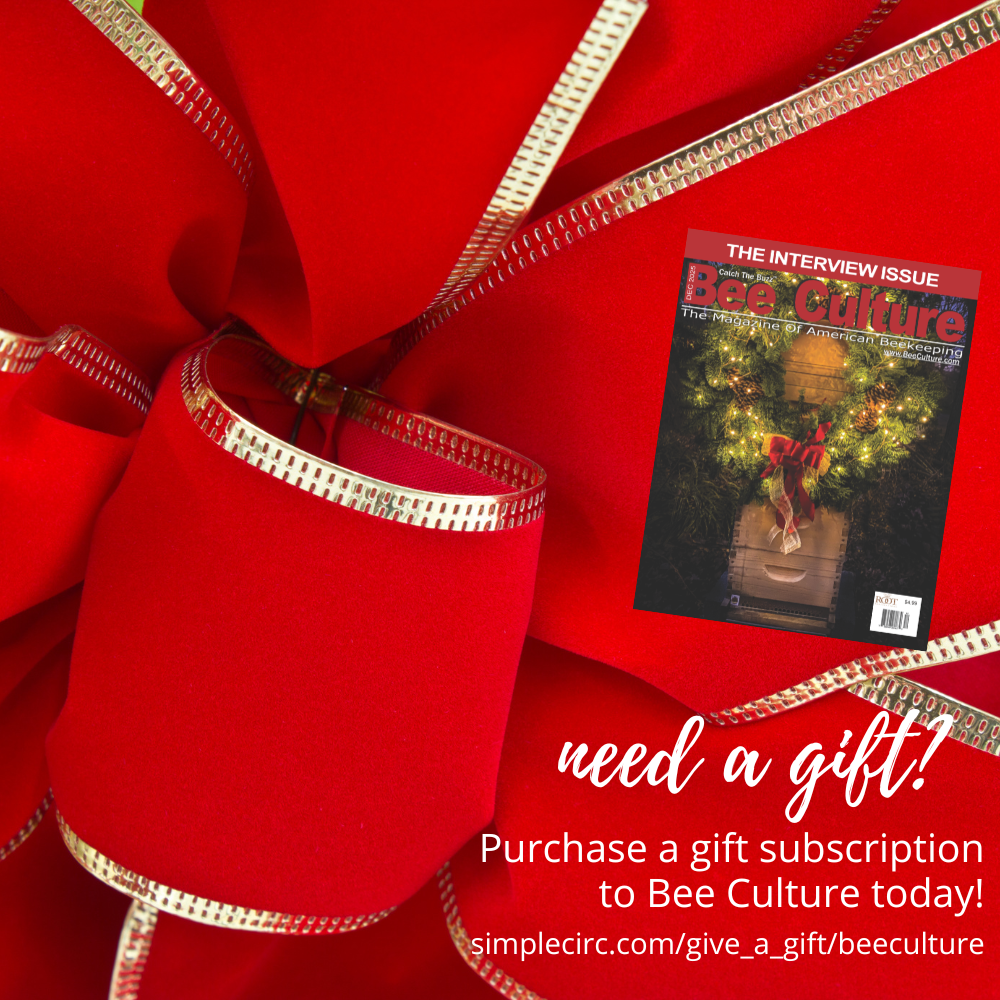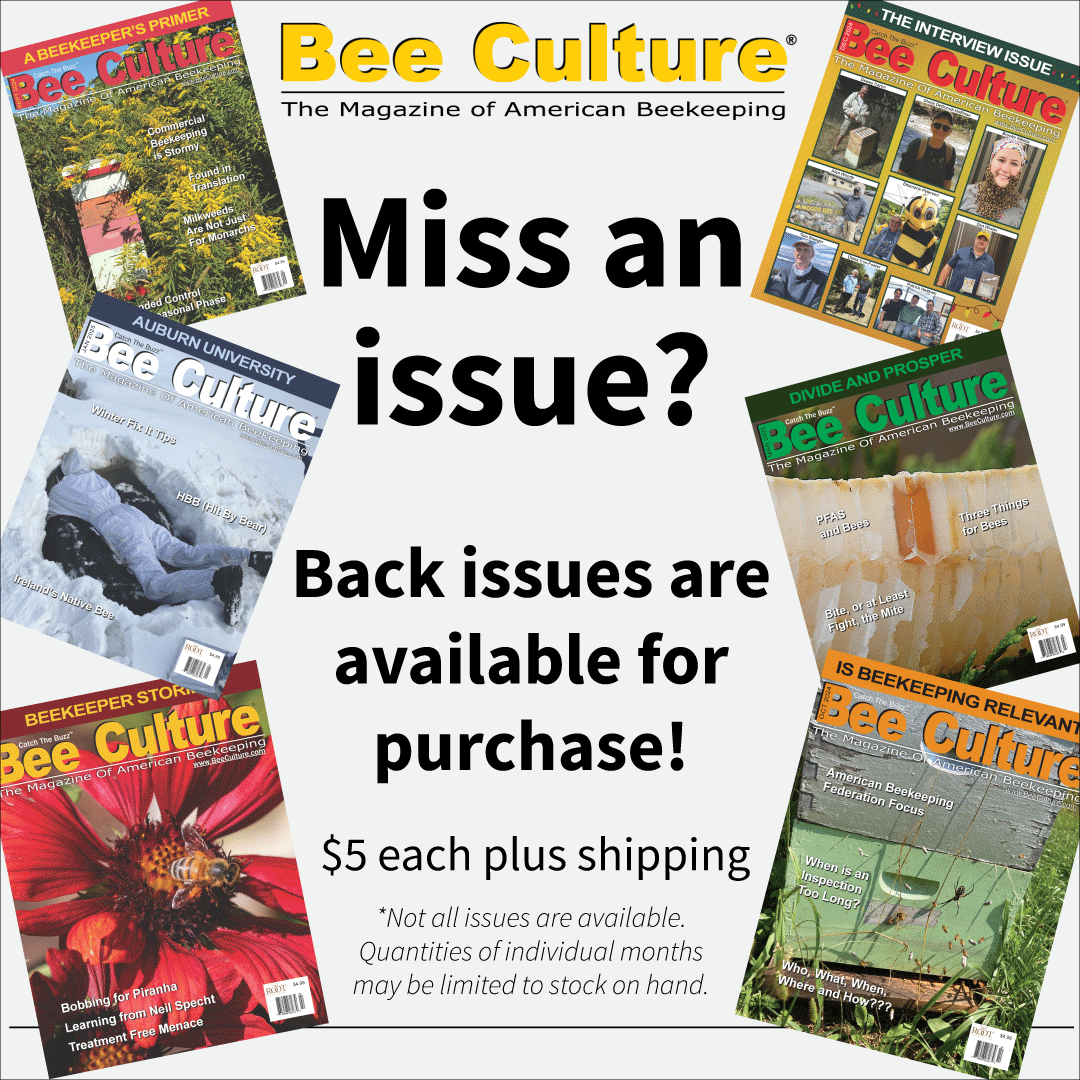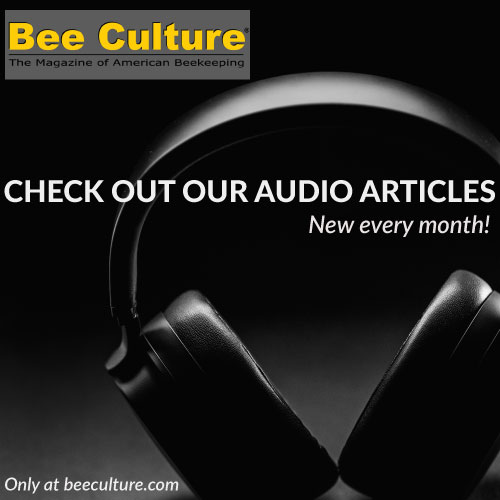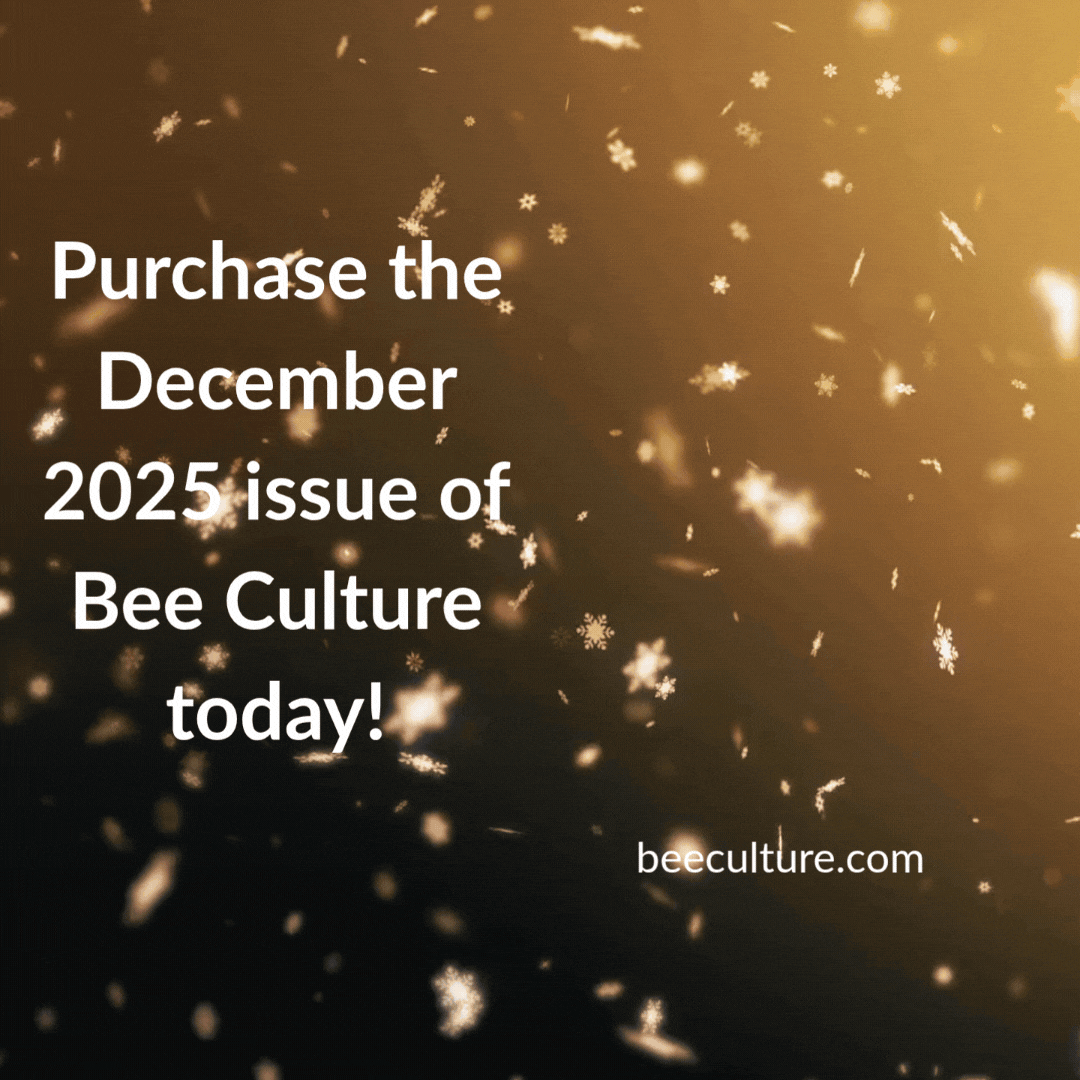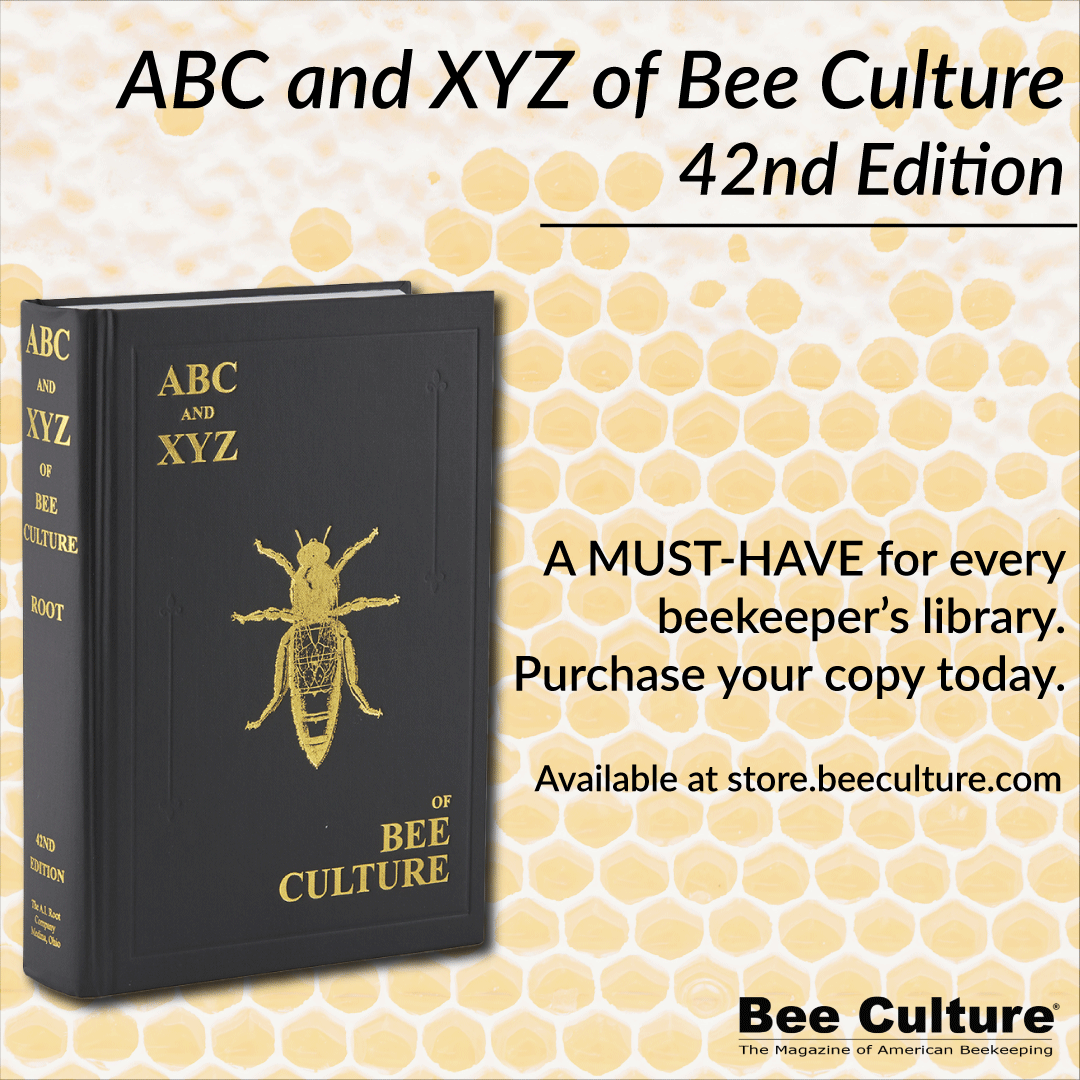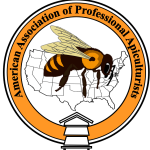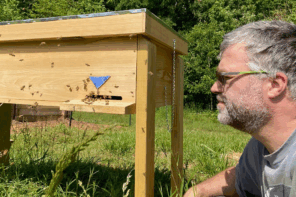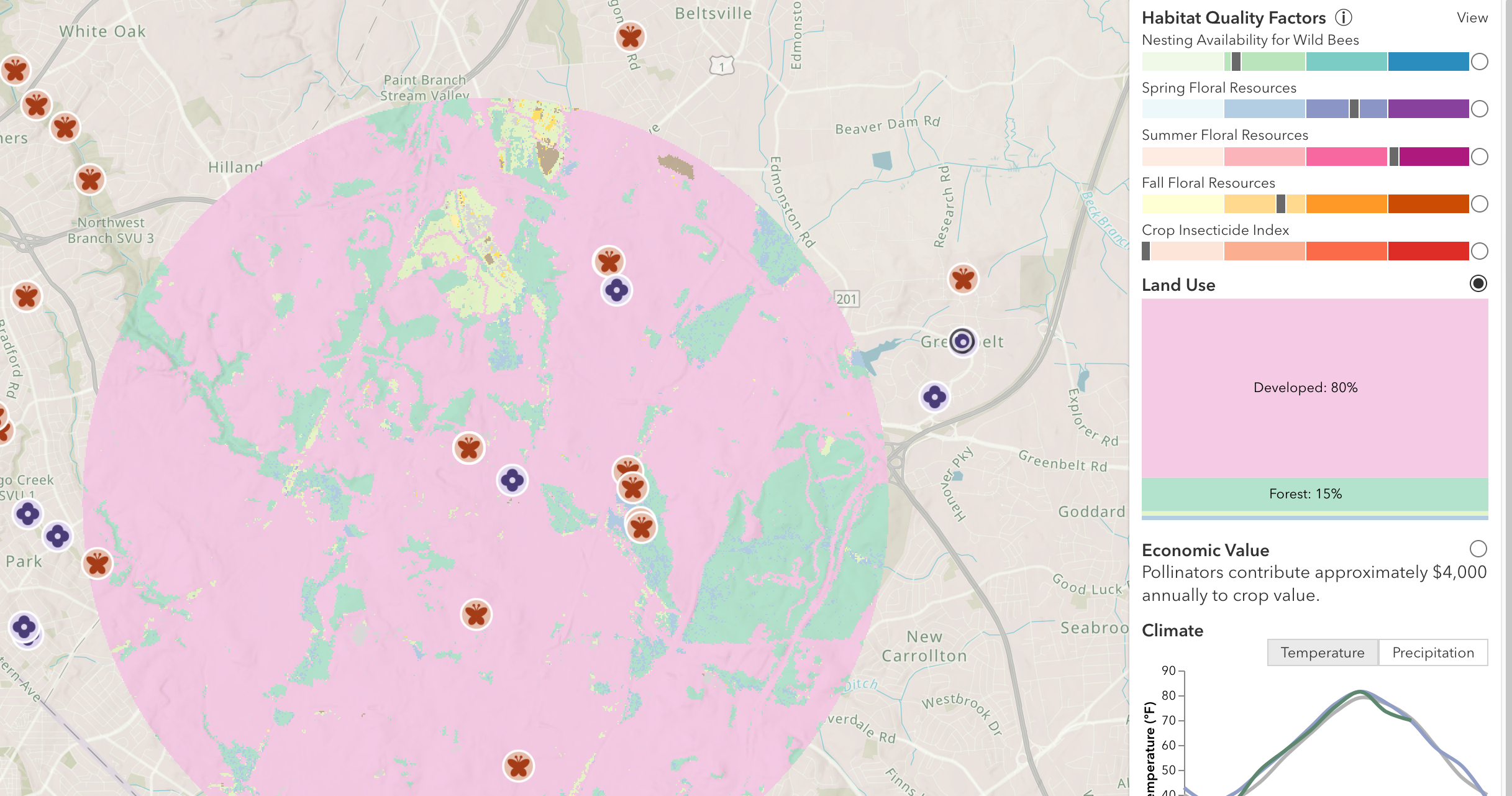Part 1
https://doi.org/10.55406/ABRC.5.25.1
The American Association of Professional Apiculturists (AAPA) is an organization consisting of professors, state apiarists, scientists and students who all study and work with honey bees (Apis mellifera). The goals of the AAPA focus on three major areas: 1) promoting communication within and between industry, academia, and the beekeeping community; 2) developing and fostering research on fundamental and applied questions to gain a greater understanding of bee biology in an aim to assist and improve the beekeeping industry; and 3) creating a venue to rapidly share new techniques and current research to advance the field.
AAPA strives to fulfill much of its core mission by hosting the American Bee Research Conference (ABRC) annually. As a venue for sharing scientific research, the conference promotes communication within and between industry, academia and the beekeeping community. This year’s meeting took place in Reno, Nevada in conjunction with the American Beekeeping Federation’s annual meeting. Drs. Scott McArt (Cornell University) and Ramesh Sagili (Oregon State University) delivered keynote addresses titled “Pesticide risk to bees: What we know and what we need to know better” and “Honey bee research in partnership with stakeholders for sustainable agriculture,” respectively. Approximately 70 other presenters from academia, industry and government research institutions shared their recent work on topics critical to honey bee health, research advancement and best management practices. Nearly half of these presentations came from students and thus were eligible for the student competition. The winners of the competitions were: Claire Green (Undergraduate, poster), Benedict DeMoras (Master’s, poster), Lauren Petronella (High school, oral), Isabell Dyrbye-Wright (Master’s, oral), Lillian Johnson (Master’s, oral) and Peter Fowler (PhD, oral).
In our efforts to share the latest research with the beekeeping community, AAPA is delighted to publish the abstracts from this year’s ABRC in Bee Culture. Part 1 of the conference proceedings includes abstracts relating to the topics of Pesticides, Pathogens and Parasites, and Varroa and Hive Pests. Part 2, covering Nutrition and Foraging, Physiology, Management and Breeding, and Extension, will be published in the next issue. Thanks for reading and for participating in this year’s ABRC.
Sincerely,
The editors of the 2025 ABRC Proceedings:
Allyson Martin Ewertᵃ,ᵇ
Elizabeth M. Walshᵃ
aUSDA-ARS Honey Bee Breeding, Genetics, and Physiology Research Unit, Baton Rouge, Louisiana, USA
bLouisiana State University AgCenter, Department of Entomology, Baton Rouge, Louisiana, USA
Topic: Pesticides
Laboratory toxicity of mosquito control products to honey bees (Apis mellifera)
Poster presentation
Barascou L, Ellis JD, Jack C
Effective mosquito control is essential to Florida residents, as the state’s environment and climate are ideally suited for mosquitos. Unfortunately, some mosquito adulticides and larvicides administered by pesticide applicators could have non-target impacts, including on honey bees (Apis mellifera). In this study, we exposed honey bees to one of four mosquito adulticide active ingredients (chlorpyrifos, naled, prallethrin, sumithrin), their commercial formulations (Mosquito Mist®, Dibrom®, Duet®), or one larvicide (Bacillus thuringiensis israelensis – Bti) via oral application to determine acute toxicity (LD50) to larvae and adult honey bees. Groups of 20 newly emerged adult bees were exposed to pesticides in cages (n = 5 cages per concentration) through sucrose solution (oral and contact). Our initial results showed a high toxicity of naled for adult honey bees (LD50 = 0.27 ng/bee) after an acute oral exposure and larvae (LD50 = 23 ng/larvae) after acute exposure. The LD50 of prallethrin and sumithrin to adult honey bees were 457 ng/bee and 1504 ng/bee, respectively. The resulting data will be used to calculate the toxicity of mosquito control products and development best management practices for mosquito control programs and apiculture in the future.
Effects of mosquito larvicides and adulticides applied via truck mounted and aerial spray on honey bees (Apis mellifera) in Florida
Oral presentation
Barascou L, Rawn D, Qualls W, Oliva D, Prouty C, Ellis JD, Jack C
The use of Ultra Low Volume (ULV) mosquito adulticides is common in Florida, as they are highly effective at controlling mosquitos. Nowadays, not as much is known about how simultaneous exposure to these chemicals in realistic field scenarios will impact overall honey bee colony strength. In this study, we determined the impact of field-realistic mosquito control practices on colony strength parameters by placing 15 new honey bee colonies in three “hotspot” treatment sites in which mosquito control operators treat three to five times each site. We also placed 15 new colonies in three sites receiving little to no mosquito treatment applications (negative control sites). The “hotspot” treatment sites were treated with Mosquito Mist II®, Naled®, and Vectobac12AS®. Colony strength parameters were measured before and after the three-month treatment period and samples of hives matrices (pollen, nectar, bees, brood) were collected from all colonies and analyzed to determine the residue levels of mosquito control product present in the hives. Some product residues were found at a low concentration in hive matrices. No significant differences were observed in colony mortality and health parameters between colonies located in treated and control sites. The resulting data will be used to inform best management practices for mosquito control programs and apiculture in the future.
Pesticide residue assessment on managed honey bee populations in Kentucky
Poster presentation
Holbrook K, Olden F, Palmer J, Webster T
Honey bees (Apis mellifera) face multiple challenges as they prepare for and endure Winter, including Varroa mites, diseases, and viruses, with pesticide exposure. In Fall 2022, 52 apiaries across Kentucky’s 6 geographic regions were visited. Within each apiary, 15-grams of pollen were collected from 5 random hives for pesticide analysis. We screened for 468 pesticides using LC-MS/MS and GC-MS/MS. Our analysis detected 15 pesticide residues: 5 insecticides, 6 fungicides, 1 herbicide, 2 acaricides, and 1 synergist. Coumaphos, an acaricide, was found most often, appearing in all regions and 63 hives, with concentrations ranging from 0.0032 ppm to 0.19 ppm. Imidacloprid, a neonicotinoid, was detected at trace levels (<MDL) in 1 hive in a single region. The widespread presence of coumaphos underscores the need for further investigation. These results highlight the importance of monitoring pesticide exposure and its implications for honey bee health in agricultural environments.
Fire retardant Phos-Chek ® LC95A toxicity to honey bee workers
Oral presentation
Huang ZY, Chen L
Phos-Chek ® LC95A is commonly used to suppress forest fires, especially in California. This is normally done from an airplane, thus honey bee colonies can be exposed to this fire retardant. Beekeepers have reported colony mortality after “pink droplets” on top of hives after airplanes have passed the area dropping the agent. We assessed honey bee mortality in both newly emerged bees and returning foragers after they were misted with Phos-Chek ® LC95A or water only as a control. We found very little evidence of strong toxicity of this agent to honey bees, even when using foragers from colonies with high mite infestation. It is possible, but unlikely, that this agent might be passed to open brood and cause colony collapse.
Effect of a bee-toxic insecticide-fungicide tank mix on bee activity, soybean defoliation, and soybean yield
Oral presentation
Johnson LHP, Hearon LE, Lin CH, Lindsey LE, Johnson RM
Soybeans (Glycine max) and bees have a mutually beneficial relationship where nectar is provided in exchange for pollination that can improve yield. However, pesticide use on soybeans during bloom could disrupt this relationship by harming bees and reducing yield benefits from pollination. The aim of this project was to document the relationship between bee foraging and soybean yield when a pesticide application is made at different times of day, mid-day and in the late afternoon, during peak bloom (R3), and after bloom has ended (R5). To do this, soybean plots in central Ohio were sprayed individually with a bee-toxic mixture of Fastac insecticide (10.9% alpha-cypermethrin) and Fitness fungicide (41.8% propiconazole) using a backpack sprayer. Bee activity was documented through use of an audio recording device, and audio files were then analyzed for instances of bee buzzing by a specially trained machine learning model. Analysis of bee audio data indicates no significant difference of bee foraging based on time of treatment. However, midday treatments and treatments occurring during the R3 growth stage had significantly higher foraging rates compared to midmorning treatments and treatments that occurred during the R5 growth stage. There were no significant differences between soybean defoliation or soybean yield based on the time of pesticide application. These results give further insights into how bee foraging varies over the course of the soybean growing season and over the course of the day, which can inform pesticide application recommendations to minimize bee exposure.
Effect of foliar micronutrients on the survival of honey bee larvae
Poster presentation
Johnson RM, Shannon B, French M
Foliar application of elemental micronutrients intended to support plant health are often made during crop bloom when honey bees may be exposed. This study tested the effects of five micronutrients (B, Ca, Fe, Mn and Zn) on the survival honey bee larvae reared in vitro with micronutrients incorporated into larval diet at a range of concentrations. Adult honey bees were also sprayed with micronutrients using a Potter Spray Tower. Honey bee larvae were found to be much more sensitive to micronutrients than adult honey bees. No acute mortality was observed for any micronutrient in adults, even at the highest concentrations tested (10,000 ppm). Boron, which is used as an insecticide, was found to be most toxic to larvae (LOEC = 0.51 ppm), followed by iron (2 ppm), zinc (3.6 ppm), manganese (16 ppm) and calcium (38 ppm). It is not known how these toxicity data relate to the real-world exposure larvae may receive following foliar micronutrient applications. However, these data do demonstrate the potential for micronutrients to harm larvae and could explain the unexpected brood loss observed by beekeepers in colonies pollinating almonds.
Diagnostic screening of pathogens and pesticides in commercially managed colonies
Oral presentation
Lamas ZS, Boncristiani D, Niño EL, Seshadri AH, Fine J, Chen J, Evans JD
This study screened pathogens, parasites and pesticide residues during a severe loss event in commercially managed colonies in Florida, and subsequently during almond pollination in California. Through beekeeper interviews we estimated economic harm from colony loss, and loss of near-term income. A pathogen screening associated was paired with these losses. Finally, we counted the number of detections, and then summarized the concentration of pesticide residues by their respective class. We then calculated hazard quotients for each colony matrix, identifying residues which significantly contributed to risk. We identified single major contributors in high-risk and extreme high-risk samples.
Pesticide risk to bees: What we know and what we need to know better
Keynote address
McArt SH, Mueller TG, Graham KK, Milbrath MO, Isaacs R, Muniz PA, Sossa DE, Baert N, Anderson W
Estimating pesticide risk to bees requires knowledge of two factors: exposure and toxicity. What do we know about patterns of exposure in the real world? What do we know about toxicity? How do scientists integrate exposure and toxicity data to estimate risk? When is risk from pesticides high vs. low in the real world? Are protections from regulatory agencies adequate for minimizing harmful effects of pesticides on bee populations? This talk will dig into my lab’s efforts to answer these questions. I will show that we know remarkably little about pesticide exposure in the real world, that adult honey bee LD50s are an inadequate metric for toxicity, and that several parameters in current regulatory agency risk metrics are either unknown or biased to underestimate risk. This said, current pesticide risk assessment methods show that risk during day-to-day beekeeping is generally low, while risk during crop pollination and planting of neonicotinoid-treated corn and soybean fields is frequently high enough to negatively impact bee populations. If progress is to be made on this topic, scientists must step out of the academic bubble and interact directly with farmers, beekeepers, crop consultants, regulatory agencies and the pesticide industry.
The impact of exposure to multiple pesticide residues in beeswax on adult honey bee longevity in vitro
Oral presentation
Petit L, Jack C, Ellis J
In honey bee (Apis mellifera) hives, beeswax may limit bee exposure to harmful chemicals by serving as a sequestration matrix. However, trapped chemicals may be slowly released into the hive environment, posing risks to bees through long-term exposure. Researchers have previously shown that beekeeper-applied active ingredients, such as fluvalinate and coumaphos, and some agricultural pesticides, like bifenthrin and chlorpyrifos, are highly prevalent in beeswax. Despite the accumulation of chemicals in beeswax, no studies have been conducted to evaluate the effects of this exposure on the longevity of individual adult honey bees. Here, we aimed to assess the toxicity in vitro of four frequently detected pesticides (amitraz, acrinathrin, chlorfenvinphos and bifenthrin) and determine if the concentrations found in hives pose a risk to honey bees. We identified LD50 values (mg/g of wax) for each compound as follows: amitraz (1.310), chlorfenvinphos (0.731), acrinathrin (0.504) and bifenthrin (0.237). The risk (calculated as the concentration in wax divided by LD50) ranged from 10⁻⁵ for bifenthrin to 5 × 10⁻4 for acrinathrin. This research is critical for elucidating our understanding of the impact of pesticides on honey bees.
Enhancing the connection between honey bee laboratory findings and colony health outcomes
Oral presentation
Schmehl DR, Valbon W, Zuber J, Haas J, Pamminger T
Regulatory authorities require extensive toxicity and exposure data to characterize safety of pesticides for honey bees, yet new approaches to characterize effects are being discussed among stakeholders. One consideration is the link of (sub-)lethal effects observed under laboratory conditions to effects observed at the colony level. Here we highlight a study that evaluates a laboratory-based microcolony experimental design for predicting colony-level health outcomes. Imidacloprid was orally dosed to adult honey bees at five concentrations. The imidacloprid-treated diets were removed after 10 days and replaced with control diet for an additional 20-day observation period. Survival, diet consumption, wax production, behavior and egg presence were recorded. The study ran concurrently with a standardized regulatory experimental design (OECD 245) to compare microcolony results to that of standardized test designs. We observed less toxicity in the microcolony design, yet the microcolony resulted in a more consistent and clearer dose-response for diet consumption. No delayed toxicity or decreased consumption associated with imidacloprid was observed once the bees were no longer exposed to imidacloprid. Follow-up work is planned to understand the underlying mechanisms observed in our study and how these laboratory data coupled with novel approaches can be used to better predict colony health outcomes.
Assessing the spatial risk of pesticide exposure to honey bee hives in Kentucky using GIS analysis
Oral presentation
Tiwari S, Palmer K, Webster T
Honey bee populations face significant threats from pesticide exposure. In Kentucky, agricultural crop production covers the majority of land and identifying high-risk zones for pesticide exposure is essential for honey bee conservation. This study uses Geographic Information System (GIS) tools to analyze the proximity of honey bee hives to pesticide-prone agricultural fields. Hive location data were integrated with pesticide presence data collected from honey, pollen and wax samples across Kentucky. Using spatial analysis techniques, a 1-kilometer buffer was generated around each hive to represent its foraging range. These buffers were overlaid with high-pesticide agricultural zones derived from USDA Cropland Data Layer (CDL) and NLCD datasets, allowing for the identification of high-risk areas. The distances between hives and high-pesticide crop fields were calculated using proximity analysis. The results highlight regions where honey bee hives are most at risk. These spatial data will mitigate pesticide risks to support sustainable agricultural practices. A GIS-based risk map offers a visual tool to protect honey bee populations.
Topic: Pathogens and Parasites
Sinigrin, a candidate for Nosema (Vairimorpha) control, does not harm honey bees
Poster presentation
Adeyeye O, Webster T, Antonious G
Control of Nosema (Vairimorpha) ceranae infections in honey bees has relied primarily on fumagillin, for use in the United States. However, the expense and toxic effects of fumagillin indicate the need for alternative control measures. Glucosinolates are natural products in many plants, and have anti-fungal properties. They may be candidates for control of this pathogen. We fed one glucosinolate, sinigrin, mixed in sucrose solution to caged bees in preparation for trials with Nosema-infected bees. Our trials showed that three concentrations of all had little effects on bee mortality over a 20-day period.
Viral dynamics and immune responses in winter-surviving and non-surviving honey bee colonies
Oral presentation
Amiri E, Mehrparvar S, Bonatti V, Martinez Caranton O
High Winter honey bee colony mortality has been a global concern for beekeepers over the past few decades. Several biotic and abiotic stressors, including Varroa mites and viruses, have been linked to Winter colony losses. However, the dynamics of different viruses and the immune responses in collapsing colonies have not been closely compared to those in surviving colonies. In this study, we conducted a colony-level survey in a single apiary, assessing Varroa mite infestation level, the prevalence and titer of seven viruses, and the expression level of 12 immune genes. Sampling was performed every two weeks from September 12th, 2023, to February 22nd, 2024. Our results showed that the level of certain viruses increased during the Winter and remained high until colonies collapsed. In surviving colonies, however, after an initial increase viral titers gradually decreased as colony population grow. While the expression of immune genes increased significantly, vitellogenin expression level decreased markedly in collapsed colonies. These findings will be discussed in detail in the context of virus-host interaction.
Critical developmental stages of honey bee (Apis mellifera) queens to viral infections
Oral presentation
Bhandari S, Martinez Caranton O, Hardy J, Valizadeh Gever B, Mehparvar S, Harris JW, Simone-Finstrom M, Amiri E
Viruses are intracellular pathogens that infect, affect and interact with honey bees. They are considered a major health concern for honey bee queens. The primary approach to reducing or preventing queens from viral infections involves identifying viral transmission routes and critical developmental stages during which viruses can effectively infect queens. To achieve this, we conducted a series of controlled experiments and surveys in commercial queen production operations, covering the entire queen production process. By utilizing RT-qPCR approach we tested seven honey bee viruses including DWV type A and B, BQCV, LSV, CBPV, SBV and IAPV. Regardless of the virus type, our results clearly show the importance of vertical and venereal transmission routes in infecting queens. Queens are highly vulnerable at the beginning of their development, highlighting the importance of selecting healthy breeder queens. They are also very sensitive to viral infections during mating, emphasizing the need to produce healthy mature drones during the queen mating period. In addition, we consistently observed higher virus loads in queens sampled from banked colonies than the ones from mating nucs, suggesting that queen banking practice may be a potential step in the transmission of viruses to young honey bee queens.
Pathogen dynamics in a Varroa-free world: a comparison of honey bee pathogens in French Polynesia and the Chatham Islands with mainland New Zealand and the United States
Oral presentation
Fassbinder-Orth C, Dearden P, Wald K, Kozlak A, Woolpert A
With the recent discovery of Varroa mites in honey bee colonies in New South Wales, Australia, there remain only a few inhabited places on earth that are certified Varroa-free. Two such locations include the remote Chatham Islands, an archipelago east of New Zealand, and the island of Moorea in French Polynesia. In this study, nest worker bees were collected monthly from commercial honey bee colonies on the south island of New Zealand (n=50) and Iowa, United States (n=50), and compared to samples collected in the Chatham Islands (n=10) and Moorea (n=12). Using droplet digital PCR (ddPCR), 14 different pathogens were quantified. Monthly Varroa mite levels were also quantified in the mainland New Zealand and Iowa colonies. The number of different viruses detected in the Chatham Islands and Moorea was significantly lower than in the mainland New Zealand and Iowa bees. Additionally, significantly different patterns of pathogen dynamics were found in mainland New Zealand compared to the Iowa bees. This includes significantly higher levels of DWV in New Zealand bees compared to Iowa bees. The results of this study shed light on global patterns of honey bee health and disease.
Molecular diversity and antibiotic susceptibility of Melissococcus plutonius
Oral presentation
Fowler PD, Moricz BS, Milbrath MO
European foulbrood has become endemic among apiaries in Michigan with 1 in every three colonies sampled containing the causative bacterium M. plutonius. Only one antibiotic is approved for treatment of EFB in the United States, oxytetracycline, which has been used for disease management since the 1950’s. However, due to the difficulty of culturing M. plutonius in the lab, little is known about both the molecular diversity circulating in US apiaries and whether resistant strains have emerged. Here we use whole genome SNP analysis to analyze a broad set of M. plutonius isolates spanning multiple beekeepers and years. Three isolates were selected from each genetic grouping and tested for susceptibility to oxytetracycline using standard CLSI guidelines on two commonly used media. Every isolate tested remained susceptible to oxytetracycline 96 hours after inoculation. However, many strains remained viable on substrates with very high concentrations of antibiotic, showing growth after antibiotic efficacy waned with wide variability in growth rate and characteristics between variants, media type and age of media. These results suggest that M. plutonius may be persisting in honey bee colonies after treatment through mechanism that remain to be elucidated.
Dominance of recombinant DWV genomes with changing viral landscapes as revealed in national US honey bee and Varroa mite survey
Oral presentation
Hesketh-Best PJ, Mckeown DA, Christmon K, Cook S, Fauvel AM, Steinhauer NA, Schroeder DC
The viromes of US commercial apiaries and their ectoparasitic mites are poorly characterized at a strain level and there is a need to integrate genomics into pathogen surveillance. Here we will present the findings of our recent study published in Communications Biology where we sequenced RNA viromes from 383 adult bees and 173 mites pooled samples from 11 major US beekeeping hubs in 2021, assembling 45 complete and 1,702 partial genomes. Protein sequence similarity networks and recombinant genome identification revealed a new viral landscape. Sinaivirus (n = 312), Iflavirus sacbroodi (n = 280), and Iflavirus aladeformis (DWV, n = 135) genomes were common. Recombinant DWV genomes with high nucleotide identity were widespread, and DWV type A master variants were rare, with an indication that RT-PCR surveillance may over-detect type A due to the prevalence of recombinant DWV genomes. We will discuss the ease of using genomic technologies for future surveys so as to avoid misidentification of common honey bee virus genomes and their impact on colony health.
Calcofluor-induced damage to the honey bee peritrophic matrix affects Nosema (Vairimorpha)
ceranae infection
Poster presentation
Joshi Y, Webster T
The peritrophic matrix (PM) is a chitin-protein structure known to protect the honey bee midgut from Nosema and perhaps other pathogens. We fed caged worker bees Nosema spores and calcofluor, a fluorescent stain that binds to chitin, in 50% sucrose solution. At selected times after inoculation, we collected bees, removed their midguts and embedded the midguts for sectioning and fluorescence microscopy. The line profile technique available through Olympus Cellsens imaging software showed quantitative changes in the PM at selected cross section points. Also, calcofluor intake was directly related to bee mortality in the cages.
Virus infections inhibit queen egg laying, change pheromone profiles, and are linked to the presence of supersedure cells
Oral presentation
McAfee A, Chapman A, Fine J, Zoe R, Peters K, Currie RW, Tarpy DR, Foster LJ
“Poor queens” have been identified by beekeepers as a primary concern in numerous surveys, but what makes a poor queen poor? We conducted autopsies on beekeeper-identified failed and healthy queens and found that failed queens had smaller ovaries, fewer sperm, lower sperm viability, and higher levels of some viral infections. We hypothesized that viruses could be causing a decline in fecundity via a reproduction-immunity trade-off, whereby diverting a limited supply of cellular resources to support immune function can result in fewer resources invested in fertility. Results of laboratory queen infection experiments support this hypothesis. We found that queens injected with live virus (a mix of BQCV and DWV-B) were less likely to recommence egg laying after infection, whereas queens injected with UV-inactivated virus or saline were not. Additionally, queens receiving live virus had significantly smaller ovaries than saline controls, with UV-inactivated virus causing an intermediate phenotype. In a field trial, we found that virus infection was again associated with smaller ovary masses, in addition to disrupted pheromone profiles and a higher likelihood of supersedure cell rearing. Our data show that virus infections are clearly problematic for queens and negatively affect their physiology. This work was supported by Project Apis m.
Virome compositions indicate that viral spillover is a dead-end between the western honey bee (Apis mellifera) and the common eastern bumblebee (Bombus impatiens)
Poster presentation
McKeown DA, Evans E, Warner J, Zimmern R, Masterman R, Berrington A, Nemecek M, Costello C, Bernstein E,
Hesketh-Best PJ, Spivak M, Schroeder DC
The potential of viral spillover from the western honey bee (Apis mellifera) to other insects is well established. New variants should inevitably emerge following a host expansion, yet to our knowledge no study has shown this within this system. Here we will present the findings of our recent study where we sequenced the RNA Virome of sympatric A. mellifera (n = 389) and common eastern bumblebee Bombus impatiens (n = 117) over three years. Distinct viromes occurred within each bee species throughout the study duration, with honey bee viruses forming a minor fraction of the bumblebee virome. Viruses shared by both bees shared over 98% nucleotide identity, and no bumblebee-specific strains of honey bee viruses occurred, as expected if spillover led to a true host expansion involving bumblebee-bumblebee transmission. We will discuss whether honey bee viruses, such as deformed wing virus, black queen cell virus, and sacbrood virus, are a genuine threat to the long-term survival of bumblebees.
Development and testing of a potential Nosema vaccine for honey bees administered via transgenerational immune priming
Oral presentation
Petronella L
Transgenerational immune priming (TGIP) is a mechanism that allows insects with innate immunities to develop acquired immunity from their mothers that have been exposed to specific pathogens. The process is initiated by the egg yolk precursor and PRP protein, vitellogenin. This protein identifies and binds to pathogen associated molecular patterns (PAMPs) and transports immune elicitors to developing offspring, thus resulting in a secondary immune response (Harwood, 2019). This process has been utilized to develop an oral vaccination that prevents American foulbrood in the offspring of vaccinated queens (Dickel, 2022). The innovation of the AFB vaccination prompts investigation of other potential pathogen treatments that utilize the mechanism of TGIP. In this study, a killed Nosema inoculation solution is administered to Apis mellifera queens and the efficacy is documented across each of the 4 groups evaluated. 4 weeks after the vaccination of queen honey bees, each group is inoculated with live spores to test the vaccine’s efficacy. Spore load and mortality are analyzed across each of the 4 groups by a bi-weekly routine composite sampling of worker bees. Each colony is sampled for 4 weeks pre-queen inoculation and post-queen inoculation, and the results are documented across various figures.
Nosema ceranae infection alters honey bee (Apis mellifera) queen behavior and reproductive capacity
Poster presentation
Rangel J, Rowe M, Nichols K, Shepherd T
The takeover of Nosema ceranae over N. apis as the primary honey bee (Apis mellifera) gut pathogen has revealed a knowledge gap regarding how N. ceranae affects colony health. While the general health consequences of nosemosis are well-substantiated, the long-term effects, specifically on queen behavior, are understudied. In this study, we explored the effects of N. ceranae infection on queen egg-laying capacity, mobility, and retinue behavior. We hypothesized that queens would lay fewer eggs, be less mobile, and elicit a smaller worker retinue after inoculation with N. ceranae compared to their baseline response. We set up observation colonies headed by sister queens and fed each a sucrose solution. We monitored the queens’ egg-laying capacity, mobility, and retinue behavior for six days. Then each queen was inoculated with a sucrose solution containing N. ceranae spores and measured the same parameters. After inoculation there was a significant increase in mobility and egg-laying capacity with a significant decrease in retinue size.
Topic: Varroa and Hive Pests
Common garden evaluation of three different honey bee stocks
Oral presentation
Walsh EM, Fontaine M, J Latore, Avalos A
We assessed three different honey bee stocks in two commercial beekeeping operations collaborating on this study. In doing this, we hoped to assess stock success (survival rates and honey production) in both commercial operations, quantify varying responses in behavior and health status (Varroa and Nosema loads over time), and get a baseline supersedure rate and economic success rate of all stocks in both operations. Honey bee stocks can be sensitive to displacement from their rearing environment and management styles — it is currently unknown if Pol-line, which is reared in Baton Rouge, LA by the USDA-ARS, could be described in this way. We suspect that locational differences (including weather and nectar flows) and operational differences will overshadow anything but highly significant differences in supersedure rates and disease resistance/tolerance. This allows us to see if there are meaningful stock-dependent differences in these values in two different field settings. We expect variability in stock performance with a key goal to identify areas of significant differences between stocks. This work is ongoing, but differences in parasite loads are already emerging, which can lead to the formation of best management practices for beekeepers based on locational contexts and operational styles.
Evaluating entomopathogenic fungus Beauveria bassiana strain HF23 in powder formulations as a control for Varroa destructor
Poster presentation
Ahn D, Johnson RM, Arends J, Hack R
V. destructor is a primary stressor contributing to decline of honey bee populations. While V. destructor has been controlled using synthetic acaricides, it has developed resistance to active ingredients. Entomopathogens have emerged as a promising alternative. This study assessed the efficacy of the entomopathogen B. bassiana HF23 – a strain not previously reported as a biological control agent against V. destructor – using inert dust formulations with talc, corn starch and powdered sugar. Furthermore, the study evaluated both mite-efficacy and bee safety under laboratory conditions simulating a beehive environment. Conidia alone (7 × 10¹² conidia/g) demonstrated 97.1 ± 12.1% efficacy against V. destructor, which was 63.6% higher than the untreated group (p = 0.03). Other mixed formulations (2.17 × 10¹¹ conidia/g) showed efficacy ranging from 42.73 to 55.85 ± 12.1%, though no significant differences were observed among them. Additionally, there was a significant difference in one-hour mite drop between conidia-only group and untreated, inert-dust treatment/control groups (p < 0.001). Bee mortality ranged from 14.1 to 29.2 ± 11.8%, with no significant differences between groups. In conclusion, B. bassiana strain HF23 demonstrated potential as a biopesticide against V. destructor under the conditions of this study.
Tropilaelaps mites can be detected through environmental DNA testing of easy-to-collect colony samples
Oral presentation
Aurell D, Tokach R, Bateson Z, Chuttong B, Jung C, Berry M, O’Neil M, Oh H, Rinkevich F, Praphawilai P, Williams GR
Tropilaelaps mercedesae mites are a serious threat to honey bee health. They have recently been found in new places in Central Asia and Eastern Europe, and will likely spread further. Invasive species can be detected through environmental DNA (eDNA) methods based on sampling from the environment, so samples from the hive environment may allow for the detection of Tropilaelaps mites. We developed a qPCR test for Tropilaelaps and tested samples from hives in Thailand and South Korea, where the mites are present. By testing multiple sample types from colonies (n=106) with a range of Tropilaelaps infestations, we were able to evaluate the relative performance of different sample matrices and to assess the sensitivity of the protocols. We observed some commonalities in the results: entrance swabs and adult bee samples performed well in both countries. There were also differences: for all sample types, detection was more sensitive in Thailand than in Korea. The results suggest that an easy-to-collect eDNA sample type (entrance swab) provides similar sensitivity as the current standard physical detection procedure used in the US (bump method), but with some significant operational advantages that include faster sampling in the field and greater potential for scalability.
Forecasting the maximum extent and invasion speed of the yellow-legged hornet in the USA
Poster presentation
Bartlett LJ, Rocha Felix VA
Following the arrival of Vespa velutina, the yellow-legged hornet, in Savannah, GA in August 2023, we have closed up 2 years of YLH nest hunting and eradication across GA and SC. Following funding from USDA-NIFA, we have begun forecasting the extent of its possible range in the US, density and possible speed of invasion both with and without additional anthropogenic saltatory leaps. I’ll cover the extent and number of nests found through 2024, genetic details that begin to hint at the number of queens found, and updates on the response otherwise. Details are intentionally vague in this abstract as this work is in close collaboration with multiple state agencies, and so any “announcements” will be approved by those collaborators.
Comparing the efficacy and danger in using fipronil, boric acid, and chlorantraniliprole as a small hive beetle control method in in-hive traps
Poster presentation
Collins I, Bartlett J
Fipronil and boric acid are the two most popular insecticides used in “attract and kill” traps for small hive beetle control. The problem with these insecticides is that they can be as dangerous to bees as they are to beetles. There is a need then to find an effective insecticide that is safe for bees that can be used in these traps. I set up an experiment comparing the efficacy and danger of fipronil and boric acid to chlorantraniliprole, a bee safe insecticide that is also effective against beetles. 115 colonies were used in this experiment, and it lasted from early September to mid-November 2024. Every two weeks beetle numbers in the traps placed in the colonies were recorded along with colony mortality. Analysis and results on efficacy will be ready by early January but based on the mortality data that has been recorded so far, the fipronil trap colonies have shown a much higher mortality rate than the other groups. This may further provide evidence for the danger of using fipronil in in-hive traps for control of small hive beetles.
Evaluating the efficacy of environmental DNA (eDNA) monitoring for Vespa velutina
Poster presentation
Deutsch KR, Bartlett LJ, Willoughby A, Boardman L, Epperson K, Fulton JC, Ellis JD
Since the initial discovery of Vespa velutina in Georgia, USA in August 2023, at least 51 nests have been eradicated in GA and neighboring SC. Rapid detection of the hornet assists these efforts; however, the current triangulation strategy to find nests, wherein adult workers are lured to baited traps, captured live, released, and their flight patterns visually tracked, will be difficult to scale as the hornet population range expands. To assist in localization efforts, we evaluated an environmental DNA (eDNA) survey method to detect V. velutina DNA from apiary environments. In this survey, we collected eDNA from: (1) soil around honey bee hives; (2) swabs of hive entrance boards and hive tools; and (3) swabs of traps used to bait hornets. We detected hornet DNA on a hive tool and some traps. No soil or apiary surfaces were positive for V. velutina DNA. Given the infrequent detection of hornet DNA from apiary materials, even when adult hornets were actively hawking in the apiary, eDNA monitoring of apiary infrastructure is unlikely to be effective for V. velutina. Nevertheless, it remains possible that this methodology could be used to augment other monitoring efforts (e.g., non-lethal bait stations) in the future.
Evaluation of six honey bee (Apis mellifera L.) stocks demonstrates differences in Varroa mite
(Varroa destructor Anderson and Trueman) infestation susceptibility
Oral presentation
Gregory Rusert LM, Niño EL
Increasing honey bee colony losses have led many breeding programs to develop a variety of different honey bee stocks with specific traits. Most commonly, these traits increase colony productivity and/or impart resistance or tolerance to various biotic stressors honey bees encounter. However, little has been done to elucidate how gene X environment interactions impact the expression of these traits and how different stocks might perform in various regions across the United States. We evaluated six different honey bee stocks in Northern California over two years using standard beekeeping management practices. Chosen stocks were well-established hygienic stocks, presumed locally adapted stocks, or fairly novel stocks recently developed. Monthly assessments included measurements of brood production, adult population size, honey and pollen stores, as well as Varroa mite levels and hygienic behavior. While there was no discerning trend among stocks in terms of population growth and production, there was a notable significant difference in Varroa mite infestation levels between the stocks. Interestingly, however, the standard hygienic behavior test did not reveal corresponding differences and has shown substantial between colony variation. Our research provides valuable applicable insight for beekeepers making decisions about utilizing different stocks best suited to their operational needs.
MicroRNA profiles of Varroa destructor: implications for honey bee health
Oral presentation
Kumar D, Alburaki M, Goblirsch M, Adamczyk J, Karim S
The Varroa destructor mite is recognized as the most destructive ectoparasite of honey bees (Apis mellifera), posing a severe threat to global honey production due to the colony losses it causes. This highly adaptable ectoparasite is a major contributor to honey bee colony mortality, primarily by acting as a vector for deformed wing virus (DWV). Varroa-virus complex is a leading cause of honey bee colony collapse worldwide. Despite its destructive impact, the role of microRNAs (miRNAs), which are small, non-coding RNAs (22–24 nucleotides in length) and regulate gene expression post-transcriptionally, remains poorly understood in Varroa biology. To address this, we used Illumina small RNA sequencing to analyze 101 million and 91 million small RNA reads from male and female mites, respectively. The study identified 306 miRNAs, with 18 upregulated and 13 downregulated in female mites compared to males. Differential expressions of selected miRNAs were confirmed via quantitative real-time PCR. These findings suggest that miRNAs play crucial roles in regulating biological processes in Varroa destructor. This dataset offers significant insights into potential miRNA targets that regulate essential biological processes in Varroa destructor, paving the way for innovative strategies to manage Varroa mites and mitigate the spread of their associated viruses.
Smarter mite control: blocking Varroa’s chemical defenses to improve treatment effectiveness
Oral presentation
Nicklisch SCT, Fine JD
The widespread parasitic mite Varroa destructor remains a leading threat to honey bee health. Chemical in-hive treatments continue to be the most economically viable approach to control these mites. However, increasing resistance to miticides often necessitates higher dosages, which can adversely impact both treatment costs and environmental sustainability. Our research introduces a novel approach to increase miticide efficacy by targeting a key chemical defense mechanism in Varroa: the ATP-Binding Cassette (ABC)-type xenobiotic efflux transporters. Using amitraz as a model compound, we demonstrate that it is co-application with verapamil, an ABC transporter inhibitor, significantly increases miticide toxicity toward Varroa mites. Through direct micro-application of the transporter inhibitor and miticide, we achieved controlled dosing at field-relevant miticide concentrations, thereby establishing a proof-of-concept for this synergistic approach. Our results suggest that targeting the ABC efflux transporters in Varroa could provide a cost-effective strategy to increase the efficiency of existing miticides, ultimately supporting beekeepers in their mite control efforts.
Evaluation of a new acaricide against Varroa destructor
Oral presentation
Pernal SF, Plettner E, Rueppell O, Lu R
Infestation of honey bees by Varroa destructor is a significant cause of colony loss, particularly during Winter months in North America. Currently, beekeepers have limited options available to treat bee colonies for varroosis. Varroa mites have quickly developed resistance to a number of registered compounds, while remaining treatment options often pose health hazards to beekeepers or have variable efficacy. As such, alternative control strategies are urgently required, particularly those that involve novel compounds. Based on previous laboratory screening assays, we discovered a new acaricidal substance, 1-allyloxy-4-propoxybenzene, referred to as 3c {3,6}. From 2019 – 2024, field trials were conducted in British Columbia and Alberta to evaluate the efficacy of this acaricide under a range of environmental conditions. These experiments showed efficacy of up to 94.6 ± 1.2%, using a 6-week treatment period with release devices containing 8 – 10 g of 3c {3,6}. Our findings showed 3c {3,6} as being safe for honey bees, having few negative effects on adult bee or brood development, however data suggest risks to queens at high doses. Fall applications of the compound were undetectable in honey harvested the following Summer, while residues from Spring applications were 0.060±0.004 ppm in honey extracted the same season.
Using small hive beetle in sustainable beekeeping
Poster presentation
Posada-Florez F, Cook SC
Pollen is an important component to honey bee colony health; it provides the nutritional protein for funding larval development. Pollen is collected by foraging honey bees in proportion to demand, however, in unhealthy colonies, such as those with high Varroa levels, excess pollen may fill the cells of frames and go unused by bees and take up space needed for pupae or other resources. Moreover, when stored, these ‘pollen bound’ frames may become moldy, which may compromise their utility, representing an economic loss to beekeepers. Nonetheless, these frames and their contents are often given back to honey bee colonies for the bees to remove. The efforts of honey bees to remove or entomb the cell contents may be a significant drain on colony health and production. Here we present a method of pollen removal by larvae of the small hive beetle (SHB), Aethina tumida (Murray) that is both resourceful and sustainable. Twelve hive boxes containing 10 pollen-bound frames each were stacked into groups of four boxes each. The total estimated weight of pollen in all frames was 88 kg. Each stack of boxes received 100 adult SHB (sex ratio 1 : 1) and left for 23 days. In that time, 14.7 kg of pollen was consumed, and 2.1 and 4.3 kg of ‘wandering stage’ SHB larvae and their frass were produced, respectively. Protein-rich larvae can be used as animal feed, and the frass is a potent fertilizer for crops. Over time, SHB larvae can remove all excess organic material from frames, which can then be returned to colonies for use by honey bees. Future work will determine the effects on colony health and productivity from giving either pollen bound or pollen-cleaned frames at time of colony establishment.
Examining virulency of entomopathogenic Metarhizium fungus on Varroa mites
Oral presentation
Quade MJ, Hopkins BK, Abegg, CK
Honey bee pollination is essential for many U.S. agricultural crops, with an estimated annual value of $14.6 billion (Morse & Calderone, 2000). The parasitic Varroa mite (Varroa destructor) is a severe and widespread honey bee pest that beekeepers must manage in order to prevent colony loss. The current products for managing Varroa mites are synthetic miticides which are potentially toxic to the environment (Rondeau & Raine, 2022). With higher rates of annual colony loss and a desire to reduce the amount of synthetic pesticides being used, there is a growing demand for alternative treatments such as biological controls (Chandler et al., 2010). Metarhizium brunneum is an entomopathogenic fungus used commercially as a mycoinsecticide for a variety of agricultural arthropod pests (Yapa et al., 2024). In this study, Varroa mites were externally treated with M. brunneum spores and maintained on honey bee pupae under laboratory conditions. Daily mortality was recorded and used to assess virulence of M. brunneum. The results of this experiment examine the potential of M. brunneum to be a sustainable integrated pest management treatment for Varroa mites.
Semi-field tests of repellent and attractant molecules to Aethina tumida, a pest of Apis mellifera
Poster presentation
Rawn D, Gross A, Jack CJ
Worldwide, honey bee colonies are being negatively impacted by pests and pathogens. A pest species, that is difficult to control in apiaries and within colonies, is Aethina tumida, the small hive beetle (SHB). There are currently no effective chemical treatments for SHB control within or outside hives. At the University of Florida’s Plant Science Research Center in Citra, Florida, the Honey Bee Research and Extension Laboratory operates and maintains a building of enclosed, mesh structures, referred to as flight cages. These flight cages can house honey bee colonies and have walls capable of containing small insects such as SHB. Assays to test the efficacies of SHB repellents and attractants within the flight cages are being developed. Pyrrolidine is being trialed as a repellent chemical. Isopentyl acetate and commercial pollen substitutes are being trialed as attractants. Position, quantity and application schedule of compounds are being tested to determine how to reliably exclude SHB from hives. For the attractant assays, a trap is being developed to contain beetles drawn to the attractant. This work will allow researchers to develop new compounds or devices and test their efficacy based on standardized methods.
Comparing application methods of Bacillus thuringiensis (Bt) for effective wax moth control in
beekeeping operations
Poster presentation
Rosario JM, Hopkins BK
Wax moth larvae (Galleria mellonella) pose a significant threat to beekeeping equipment by damaging wax combs with their tunneling and frass. This study evaluates the efficacy and practicality of Certan®, a lepidopteran larvicide containing Bacillus thuringiensis (Bt), by comparing two applications. The first method involved spraying individual frames on all sides (100 frames), while the second application method was sprayed in the spaces between frames within hive boxes (10 hives/100 frames). Both sides of each frame were photographed and analyzed using ImageJ software every three weeks to monitor wax moth infestations. Both application methods significantly reduced wax moth infestation compared to untreated controls. However, applying Certan® between frames proved more efficient, eliminating the need to treat each frame individually. These findings support the use of Certan® as an effective lepidopteran control product and suggest that space-based application is a practical approach for larger-scale beekeeping.
Adjuvants to improve Varroa control: efficacy of a new oxalic acid extended-release formulation in
commercial honey bee colonies
Oral presentation
Shannon B, Johnson RM
A leading cause of honey bee losses in North America is the ectoparasitic mite Varroa destructor. Beekeepers use chemical treatments, known as miticides, to manage this pest, but miticide resistance and low efficacy of currently available products demonstrates the need for improved miticidal formulations. Adjuvants have demonstrated improvement over extended release strip formulations of oxalic and glycerin alone, likely through improved spreading throughout the colony and increased penetration through Varroa cuticle. The goal of this research was to evaluate the efficacy of an oxalic acid – adjuvant combination in an extended-release formulation in a commercial setting. Field trials were performed on a total of 150 colonies across 3 commercial apiaries in North Dakota in late August 2024. The 5 treatment groups consisted of Maximizer® towels soaked in glycerin solvent, oxalic acid dihydrate (20 or 40 percent concentration), and Ecostep BC-12® adjuvant (0 or 0.5% concentration), with sham towels included as the negative control. Pre- and post-treatment ethanol washes and daily mite drop were monitored over the 12-day treatment period. Alcohol wash results demonstrated that unregistered oxalic acid extended release formulations were similar to sham treatments, highlighting the importance of registered and tested products that show consistency between small-scale and commercial trials.
References
Martin Ewert A & Walsh E M. 2025. ABRC 2025 Proceedings: Part 1. Bee Culture May 2025, Volume 153, Issue 5, pp. 36-45. https://doi.org/10.55406/ABRC.5.25.1

